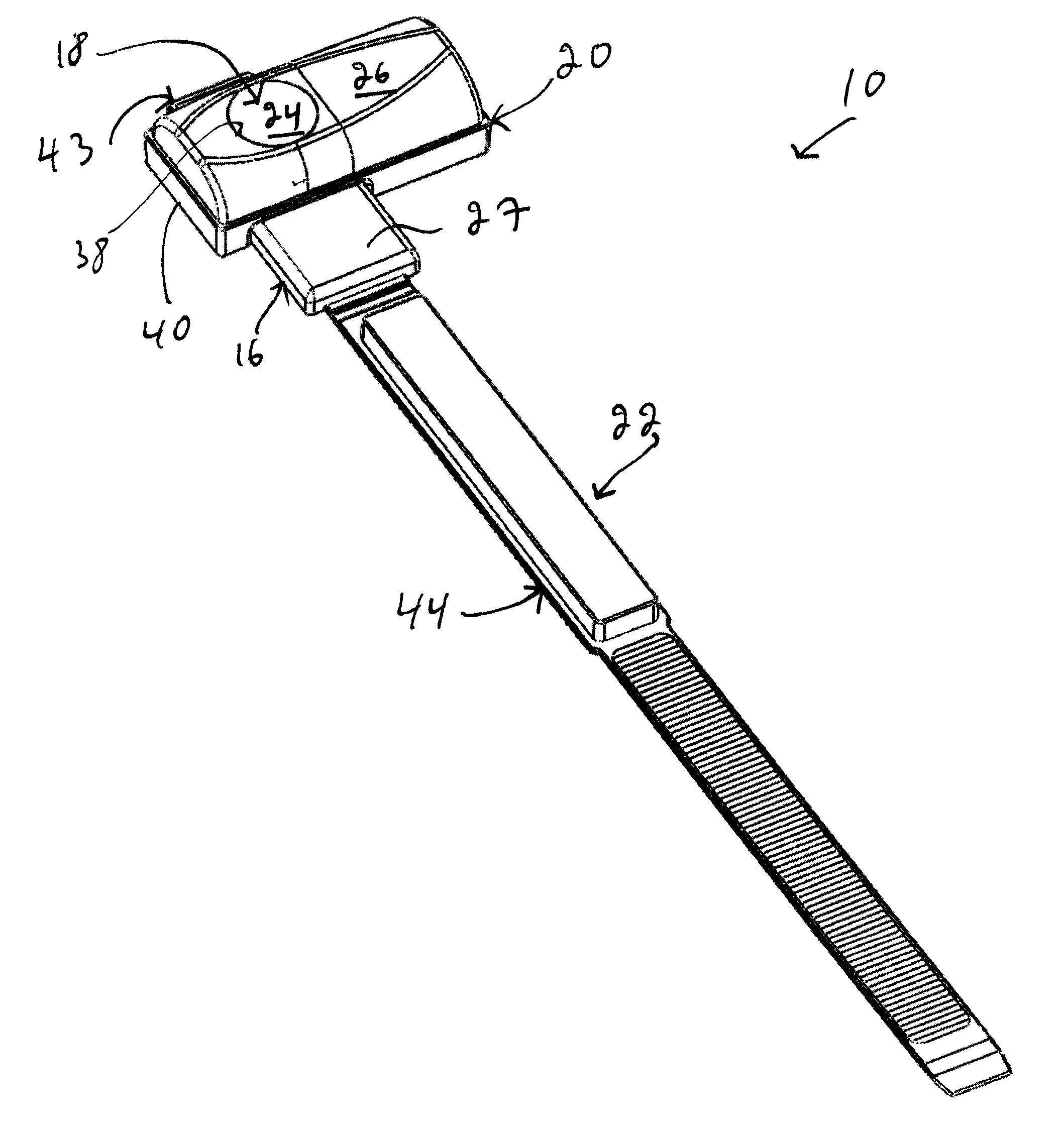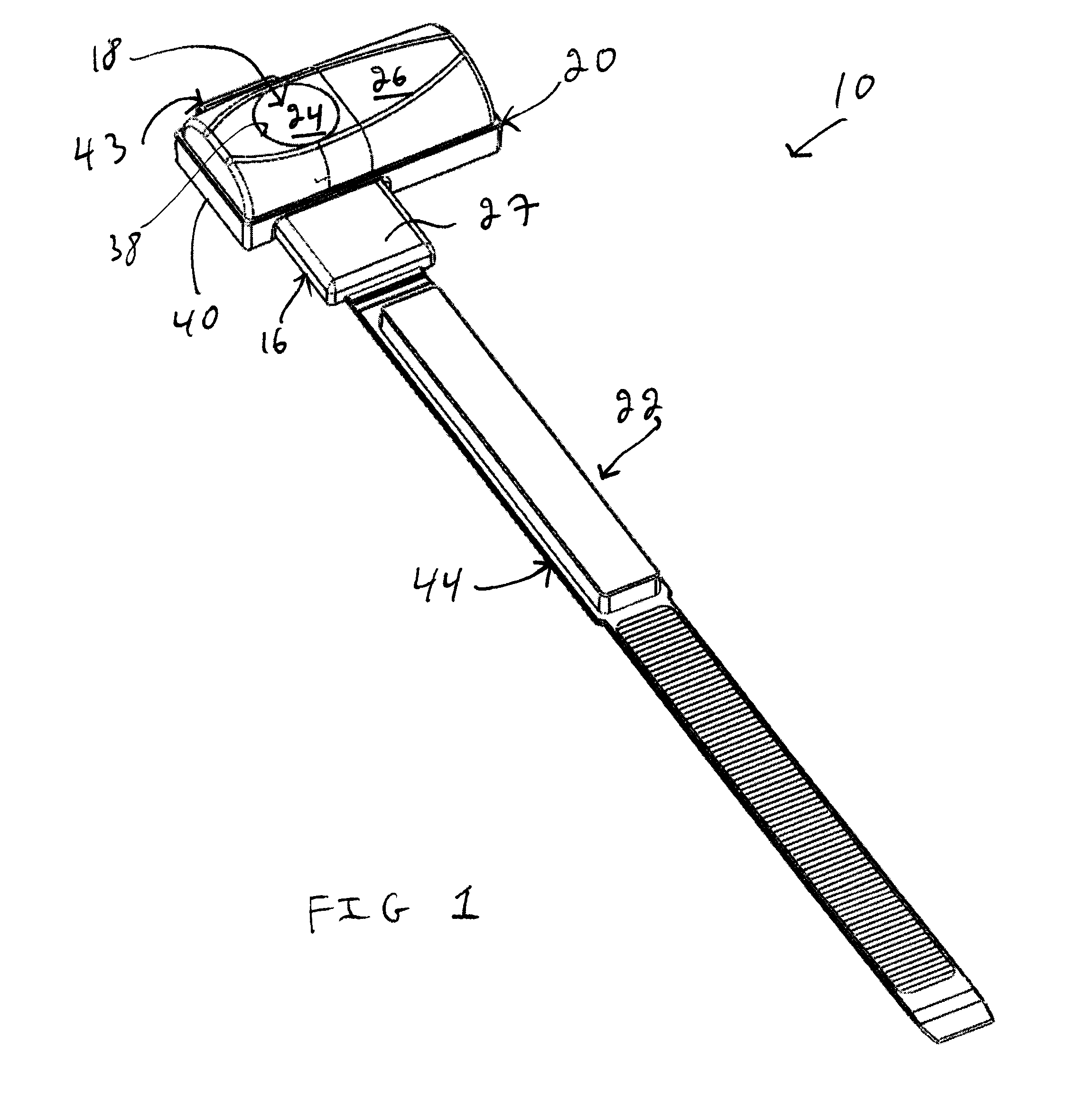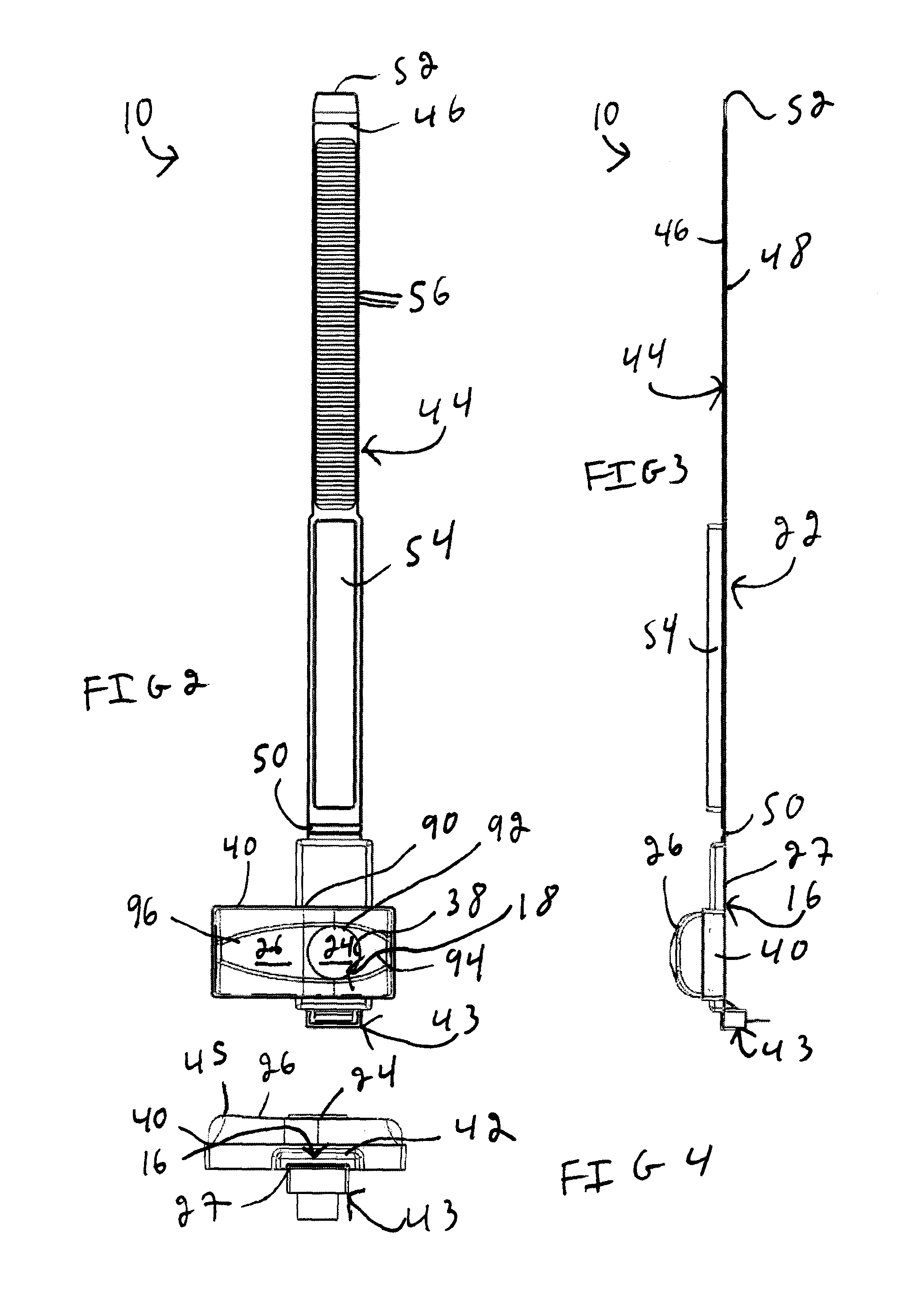Styptic device
- Summary
- Abstract
- Description
- Claims
- Application Information
AI Technical Summary
Benefits of technology
Problems solved by technology
Method used
Image
Examples
Embodiment Construction
[0034]Referring to FIG. 1, there is shown a styptic device 10 in accordance with an embodiment of the present invention. As illustrated schematically in FIG. 9, the styptic device 10 is usable for substantially hemostatically sealing a percutaneous puncture 12 in a blood vessel 14 of a patient 11, only part of which is seen in FIG. 9. Returning to FIG. 1, the styptic device 10 includes a base 16 and a main compression element 18 extending from the base 16. An auxiliary compression element 20 is removably attachable the base 16. In some embodiments of the invention, the styptic device 10 includes an attachment 22 operatively coupled to the base 16 for attaching the styptic device 10 to the patient 11.
[0035]The main compression element 18 defines a main compression surface 24 compressible against the patient 11. The auxiliary compression element 20 defines an auxiliary compression surface 26 also compressible against the patient 11. When compressed against the patient 11 substantially...
PUM
 Login to View More
Login to View More Abstract
Description
Claims
Application Information
 Login to View More
Login to View More - R&D
- Intellectual Property
- Life Sciences
- Materials
- Tech Scout
- Unparalleled Data Quality
- Higher Quality Content
- 60% Fewer Hallucinations
Browse by: Latest US Patents, China's latest patents, Technical Efficacy Thesaurus, Application Domain, Technology Topic, Popular Technical Reports.
© 2025 PatSnap. All rights reserved.Legal|Privacy policy|Modern Slavery Act Transparency Statement|Sitemap|About US| Contact US: help@patsnap.com



